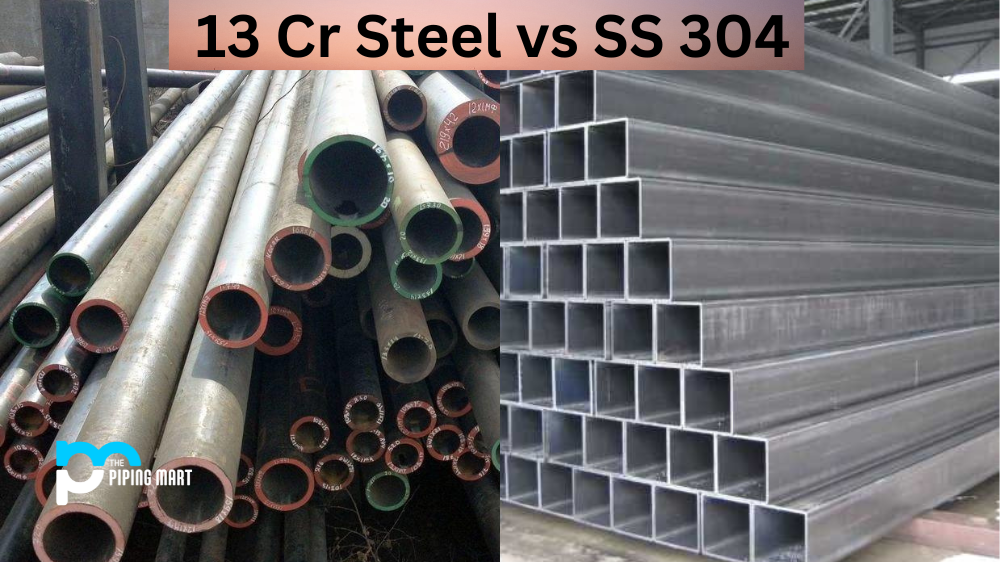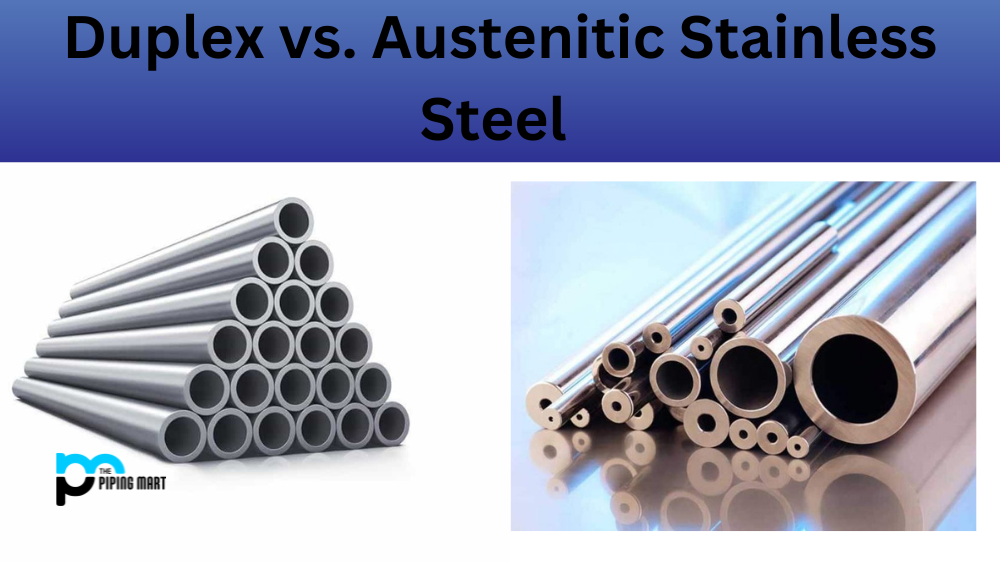When choosing the right material for your project, you must consider various factors such as strength, durability, corrosion resistance, and cost. Two popular materials for applications requiring resistance to corrosion, wear, and high-temperature environments are 13 Cr Steel and SS 304. While both materials have advantages and disadvantages, choosing the right one can significantly affect the performance and longevity of your project. In this blog post, we’ll compare 13 Cr Steel vs SS 304 and help you make an informed decision.
Difference Between 13 Cr Steel and SS 304
Composition and Properties
13 Cr Steel is a stainless steel alloy containing 13% chromium, which makes it highly resistant to corrosion and abrasion. 13 Cr Steel also has high-temperature strength and excellent welding and fabrication properties. On the other hand, SS 304 is austenitic stainless steel that contains 18% chromium and 8% nickel, making it highly resistant to corrosion and heat and suitable for various applications, including food-grade and medical equipment. However, SS 304 has lower hardness and wear resistance than 13 Cr Steel.
Corrosion Resistance
Both 13 Cr Steel and SS 304 are highly resistant to corrosion. However, 13 Cr Steel is particularly suited for environments that expose it to corrosive media, such as oil and gas production, due to its high resistance to pitting, crevice, and stress corrosion cracking. SS 304, on the other hand, is less resistant to chlorides and other halides, which can cause pitting and crevice corrosion.
Wear and Tear Resistance
Choosing a material that can withstand harsh conditions is essential in environments that expose materials to high temperatures, abrasive media, and mechanical wear and tear. In this regard, 13 Cr Steel has a hardness range of 23-33 HRC, whereas SS 304 has a hardness range of 70-78 HRB. This means that 13 Cr Steel is significantly harder and more wear-resistant than SS 304.
Cost and Availability
The cost of a material is a critical factor when choosing between 13 Cr Steel and SS 304. While both materials are widely available, 13 Cr Steel is generally cheaper than SS 304 due to lower nickel content and production costs. Furthermore, 13 Cr Steel is suitable for various applications that require high wear and corrosion resistance, making it a cost-effective choice.
Applications
13 Cr Steel and SS 304 are suitable for various industry applications. 13 Cr Steel is commonly used in oil and gas production, chemical and petrochemical processing, pulp and paper, mining and drilling. It can withstand these industries’ harsh conditions and corrosive media. On the other hand, SS 304 is commonly used in food and beverage processing, medical equipment, and architecture due to its aesthetic appeal, high temperature and corrosion resistance, and non-reactive properties.
Conclusion
When choosing between 13 Cr Steel and SS 304, you need to consider various factors, such as the composition and properties of the material, its corrosion and wear resistance, cost and availability, and its applications. Both materials have advantages and disadvantages; the right choice depends on your project’s requirements. However, if your project involves high corrosive media, abrasive surfaces, or high temperatures, 13 Cr Steel is the better choice due to its excellent resistance to wear and corrosion. On the other hand, if your project requires non-reactive and aesthetically appealing material, SS 304 is the better option. Working with an experienced fabricator and material supplier can help you make an informed decision and achieve the best results.
Meet Heer, a dynamic and driven writer learning tricks of her trade in the metal industry. With a background in Digital Marketing, Heer brings a unique perspective to her writing, sharing valuable insights. Apart from blogging she like reading and hiking.




